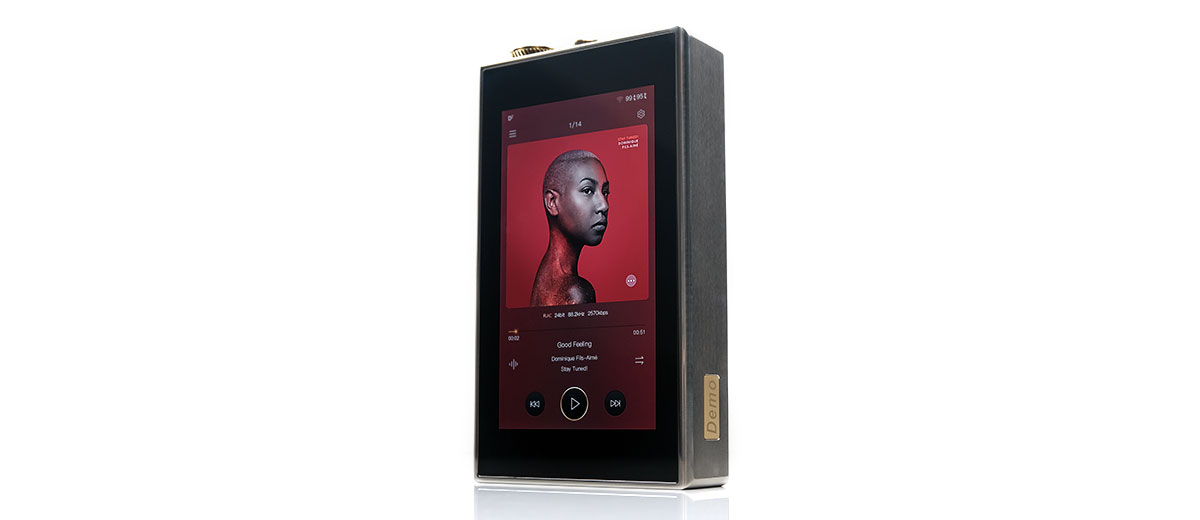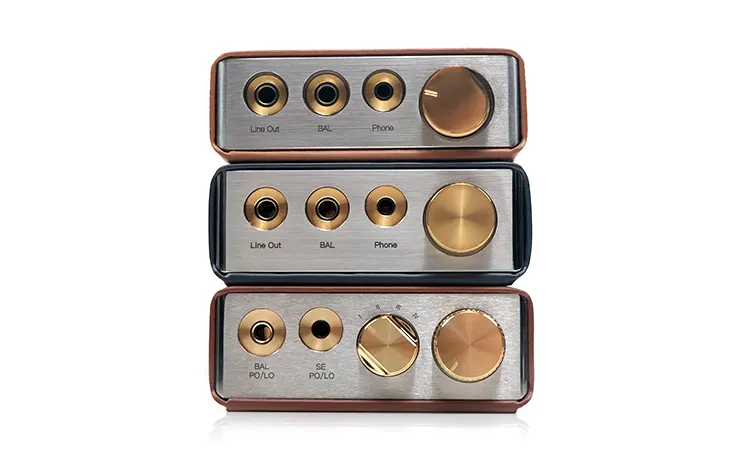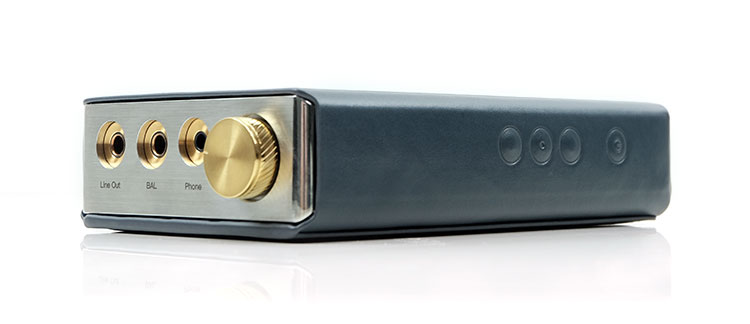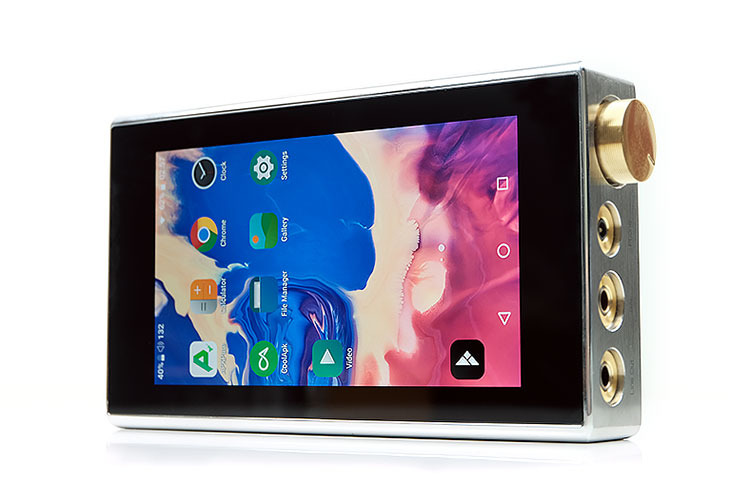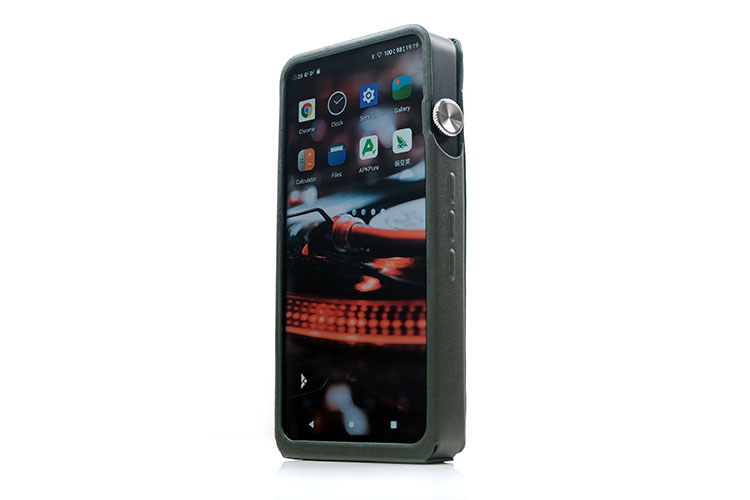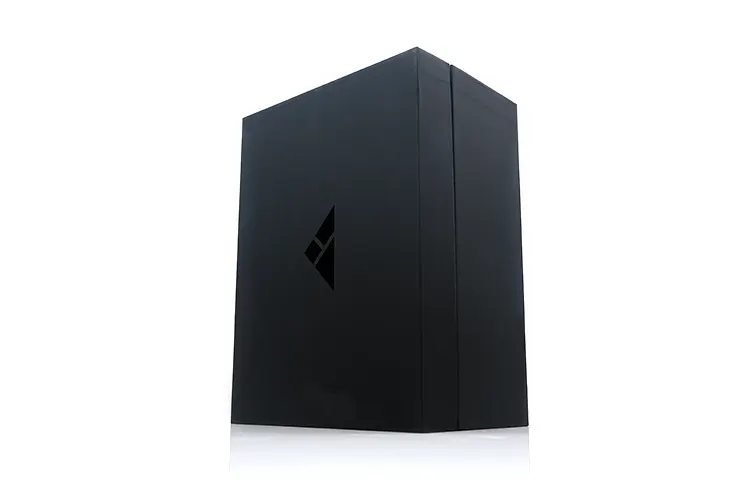Select Comparisons
The following comparisons were done using the Unique Melody Multiverse Mentor, Noble Audio’s Viking Ragnar, and the Empire Ear’s Odin for reference headgear.
iBasso DX300 MAX
$2290
The iBasso DX300 MAX was launched back in mid-2021 and like the DX320 MAX Ti, it was a limited edition run with just 500 units released at the time. It also was awarded our Top Gear Best DAP in that same year. You can find our full review of the DX300 MAX here.
Decoding
Both units are delta-sigma DAC implementations with a split digital and analog amplification design. It is pretty much the MAX way and what makes them unique.
That means you will need a DC plug and USB-C cable to charge both parts separately. However, overall battery cycles on both are extremely impressive. You do get an extra hour on paper with the DX320 MAX Ti for standard and ultimate mode compared to the DX300 MAX.
The DAC implementation is a quad ROHM BD34301EKV for the DX320 MAX Ti compared to the older dual AKM4499EQ for the DX300 MAX; a chipset that is now discontinued. The Ultimate mode will fire all four of those ROHM chips as opposed to just the two in the DX300 MAX.
Decoding on both though is almost the same with native DSD512 as well as MQA 16X unfolding capability. However, for PCM the DX320 MAX Ti goes beyond the DX300 MAX with a maximum of PCM 32BIT/768kHz compared to PCM 32Bit/384 kHz.
Both devices’ digital side also offer USB-DAC, OTG, and BT DAC capabilities with similar LDAC transmission and SBC/AAC receiving capabilities.
Amplification
Similar to the DX300 MAX amp, the new MAX is still a discreet ‘Super’ Class A design but with upgraded film capacitors and electrolytic converters.
We have also gone from a relay-based volume control used by the DX300 MAX to a first-of-its-kind 4-wiper stepped attenuator with 24 steps. You also have a mechanical 4-stage gain switch with up to 15 dB swing, (digital gain on the DX300 MAX).
Channel imbalances at a low volume will not be an issue on the DX320 MAX Ti, better than the DX300 MAX at 0.1 dB tolerance compared to 2 dB. However, for fine-tuning efficient IEMs with the stepped attenuator, you can use it in tandem with the digital volume control.
Output power capability has improved, especially with heavier loads. At 300Ω, the DX320 MAX Ti is capable of 270mW balanced output compared to 258mW for the DX300 MAX. At 32Ω, however, the DX300 MAX is the more powerful, though not by a large amount, with a maximum of 1320mW balanced compared to 1250mW on the same load.
THD+N is also better across-the-board for both light and heavier loads, with the DX320 MAX Ti around 1-2 dB more than the DX300 MAX.
Design
The form factor and design language of both units are almost identical. What has changed is the composition of the chassis materials and the enhanced functionality of the DX320 MAX Ti’s analog amplifier.
The use of titanium is classy. However, its immediate value is reducing the weight of the DX320 MAX Ti substantially by almost 200g over the DX300 MAX. You can feel that right away with a side-by-side comparison. The tactile controls of the new DX320 MAX Ti buttons designs are also advantageous for everyday use in the case.
The rear side of the DX320 MAX Ti back panel can now be easily detachable via two screws giving you immediate access and allowing you to change the batteries. That was much harder to do with the DX300 MAX.
The front panel has changed with the new 4-stage gain mechanical switch but with the loss of the dedicated 4.4mm line-out from the DX300 MAX. Both PO ports are also LO-capable with a digital shortcut in the DX320 MAX Ti to control it. Whereas the DX300 MAX gain stage was on the digital side.
The rear panel is unchanged save for a different DC power plug system that is strictly 12V rather than the older DX300 MAX 12-18V DC input.
Internally, both use the same 128GB of onboard storage and a Snapdragon 660 SoC with 6GB of RAM. On the latest firmware, both are Android 11 and Mango OS equipped with similar AnTuTu benchmarking numbers.
The OS changes relate more to the gain and PO/LO controls and the reduction in digital filters from 6 down to 2. However, you need the latest firmware on the DX320 MAX Ti to control the digital volume levels for PCM.
Performance
I think tonally, the two MAX units are not that far off, at least on a high level with similar neutral and linear sound signatures and a very pure tonal quality through the mids and highs.
However, the differences do start to shine through the more you listen carefully. Especially in Ultimate mode where the DX320 MAX Ti does seem to outshine the older unit with better channel separation and improved note texture, especially through the mids and vocals.
I would not say the newer MAX is weightier sounding per se, but certainly, there does seem to be just a little more bloom through the mids and improved saturation in vocal presence.
The DX300 MAX sounds polished but timbre-wise maybe just a little less body on the same notes which in turn maybe dims down on some of that tastier textured detail that the DX320 MAX Ti seems to be capable of when paired with the UM Multiverse Mentor.
Vocal imaging just sinks back a little in comparison, perhaps narrowing the stage slightly and a little diminution in dynamic range. Vocal bloom is more evident giving you a perception of being a little closer to the vocal delivery on the newer model as opposed to a few feet further back on the DX300 MAX.
There is a comparative softness to the imaging of the DX300 MAX with background instruments feeling a little closer to the vocal position. Whereas the DX320 MAX Ti keeps the decay a bit tighter and really opens up that space properly with its superior channel separation.
Of the two, the DX320 MAX Ti is airier with the better headroom which is insane really because I always felt the older MAX was as good as it got for staging headroom. I guess no more!
iBasso DX220 MAX
$1888
The iBasso DX220 MAX was launched back in mid-2020 and was the blueprint for subsequent MAX product lifecycles as the first of its kind. It also won our Top Gear award for best DAP in 2021. You can find our full review of the DX220 MAX here.
Technical
The DX220 MAX is the blueprint so to speak for the DX320 MAX Ti. You still get the split digital and analog circuitry, the dual-power system, and that signature form factor but in most aspects the DX320 MAX Ti is either more refined or substantially more advanced.
Inside, we go from a dual Sabre ES9028PRO to a quad ROHM BD34301EKV DAC implementation. You get DAC volume control on both but there is no Ultimate Mode option on the DX220 MAX.
Decoding has shot up on the DX320 MAX Ti from PCM 32BIT/384kHz to 786kHz though DSD on both is up to 512 with MQA moving from X4 unfolding to X16 unfolding. Both have bit-perfect playback output.
The DX320 MAX Ti’s Snapdragon 660c CPU and 6GB of DDR4 RAM also make it a faster device to use and better for multitasking than the lower clock rate of the 8-core 64BIT ARMv8 processor and 4GB of DDR3 RAM inside the DX220 MAX. You are also stuck with Android 8 on the DX220 MAX as opposed to 11 on the DX320 MAX Ti, a big difference.
The power supply has also been overhauled with improved battery life and a better voltage rail capacity for the amplifier going from 8.7Vrms to 9Vrms at 300Ω. You still get a 4+1 battery pack split for digital capacity has gone from 3.8V 4400mAh to 3.8V 6200mAh.
Output power for headgear has also been improved with a higher-end ‘Super’ Class A amplifier inside the DX320 MAX Ti offering 9V at 300Ω compared to 8.7Vrms balanced from the DX220 MAX. The dynamic range has also improved by up to 3 dB across the board.
Design
If you study them both side by side, the DX220 MAX is the smaller of the two devices but only slightly. However, because of the use of titanium in the DX320 MAX Ti chassis, it is lighter by around 80g.
Aside from that the general form factor of both is very similar including both using a 5″ IPS panel with 1080p resolution though the finishing on the pots is improved on the DX320 MAX Ti. The key differences are more focused on the functionality and accessible features of both the DAC and the amplifier.
The most obvious difference is the lack of physical controls on the DX220 MAX, something that customers fed back on pretty quickly and was rectified in the DX300 MAX with physical buttons for playback and power on the right panel. The only onboard event controller is the power button on the back of the DX220 MAX.
Huge changes also include the move to an analog 4-gain switch and the stepped attenuator on the DX320 MAX Ti as opposed to the digital gain and relay-based volume control on the DX220 MAX. You do lose the dedicated 4.4mm line-out but you get dual PO/LO for both SE and balanced on the newer design.
The DX320 MAX Ti also ditched the older optical SPDIF output and switches to Coaxial on the rear which will improve sampling rates for traditional HiFi connections.
You still get 128Gb of onboard memory in both devices and a single microSD card slot though this has moved to the back since the DX300 MAX whereas it is on the side of the DX220 MAX and got blocked with the use of a case.
Performance
Without an ultimate mode so to speak the DX220 MAX trails the DX320 MAX Ti, both in terms of the potential size of its soundstage and the perceived channel separation.
The background is blacker on the DX320 MAX Ti, noticeably so with efficient IEMs on low volume and yes, the channel balance is hugely superior also. The DX220 MAX sounds the flatter of the two presentations with a little less sub-bass extension and presence which is where I would want any player to excel using the Empire Ears Odin, for example.
The Odin is also an excellent IEM to test those older Sabre chipsets and how they work the treble coloration into the mix. Definitely, the DX320 MAX Ti Rohm chips sound more natural in tone with far better control on Odin’s upper mids and lower treble and keeping them clean but fairly smooth.
The DX220 MAX is edgier through the same upper mids region of the Odin. It’s also a bit drier and with less bass bloom and body it sounds a little brighter and leaner with more harmonic dissonance over vocal performances.
The older unit’s more of an upward shift in your listening attention. Without the balance of the DX320 MAX Ti’s smoother fuller lows your ear really homes in on the Odin’s upper-mids.
The DX320 MAX Ti will tone that imbalance down and keep excesses more in check with a better harmonic balance. Importantly, it generates a better bass fundamental that gives instruments a more naturally rounded quality.
This is an altogether more refined performance. One that should get existing DX220 MAX owners off the fence about upgrading to the latest version.
iBasso DX320
$1599
The precursor for the DX320 MAX Ti, the ‘normal’ DX320 is priced a bit lower but shares some similar technical features. This was launched Spring of 2022 and you can find our full review of the DX320 here.
Technical
Both units are Android 11 and Mango OS dual OS designed, both have a Snapdragon 660 SoC with 6GB LPDDR4x RAM and 128GB of onboard storage.
The DX320 also has a dual power capability with a 4000mAh 3.8V lithium-ion polymer battery for its digital side and a 2000mAh 3.8V for its analog stage.
Unlike the DX320 MAX Ti, they are not totally isolated from each other and one USB-C cable will charge both at the same time. Battery life is shorter on the DX320 at 10 hours on average with the stock AMP11 MK2s amp card compared to up to 17 hours on the DX320 MAX Ti.
The DX320 has a lower dual ROHM BD34301EKV DAC design compared to the DX320 MAX Ti quad-ROHM chipset and the ability to go into Ultimate or standard mode.
There is no difference in decoding ability with both offering up to DSD512 and a maximum of PCM 32BIT/768kHz with MQA X16 with 2 digital filters.
Amplification is fixed on the DX320 MAX Ti with swappable cards for the DX320. However, the analog amplifier inside the MAX is a big upgrade on any card. Super Class A discrete with a 4-wiper stepped attenuator versus a discreet-engineered upgrade on the original AMP11 from the DX300 and a relay volume control.
The DX320 amping card system gives you more choices. If the stock card is not to your liking you can switch to a NuTube AMP13 card or a discrete Class A AMP12 with a dedicated LO.
Output power is competitive at 32Ω. The DX320 MAX Ti is rated at 1250mW and the stock DX320/AMP11 MK2s at 1200mW balanced. When you increase the load you see a difference with the MAX offering 270mW at 9Vrms compared to just 168mW from the DX320 at 7.1Vrms.
Design
Of the two, the DX320 is by far the more portable device. You do not need a DC charger for it either giving you a bit more flexibility when it comes to charging on the go. It weighs less, is slimmer, looks more modern, and has a longer smartphone-like 6.5″ 60Hz IPS screen, featuring a 2340×1080 resolution.
Of course, the DX320 MAX Ti is not set up to compete in the same way as the DX320 is for portability prowess, and in some ways, its design has barely changed. Horses for courses as they say and it’s possible some will want both devices for home use and on the go.
Bear in mind though, that the battery life on the DX320 MAX Ti is superior to the stock card by several hours so if you want long-lasting battery life the MAX is superior.
Output options do vary for the DX320 also. With the stock card, you do get an additional 2.5mm TRRS output to go alongside the 4.4mm balanced and 3.5mm SE whereas there is no 2.5mm on the MAX. AMP13 drops it to 2 3.5mm SE whereas AMP12 adds a dedicated 4.4mm LO and drops the SE PO and 2.5mm TRSS.
Mind you, the 4-stage gain switch and stepped attenuator bring a better level of channel balancing from the MAX compared to the DX320 relay system. If you are using PCM you can really fine-tune the volume for most IEM and headphones when combined with the DAC volume control.
For casual use, the DX320 relay dial works very well also and for DSD it can be more useful with sensitive IEMs where the MAX stepped attenuator step does not obtain a precise listening volume match.
Performance
I went with the DX320/AMP12 balanced combo for this test because, to me, it’s the closest of the cards in engineering principle to the DX320 MAX Ti discrete Class A design.
Tonally, with the AMP12, the DX320 delivers a similar neutral and clean tonal quality. However, with something like the Viking Ragnar pairing, an IEM that’s treble is right on the fence between pure and bright, you can pick up nuanced but important differences between the two.
There is just a shade more edginess to AMP12’s highs whereas the DX320 MAX Ti is clean but very refined, pure, and erring more to the natural side for its harmonic balance in the mids and highs.
With Ragnar, it makes a difference. Especially with soprano or DSP’ed vocals pitching very high where it is relatively harder-edge and not as pure sounding compared to the DX320 MAX Ti. That theme generally runs throughout the mids for me when comparing both timbre-wise.
Now in terms of technical differences, there is a starker contrast. The DX320 MAX Ti sounds far more dynamic, especially in ultimate mode. The staging has more of an enveloping feel to its presentation, a deeper quality, and more holographic also. AMP12 will sound narrower and a shade flatter in comparison with vocal bloom less evident.
The pace and complexity of the DX320 MAX Ti resolution combined with the dynamic range are also more competitive. Busy audio passages hold a very strong image for every instrument out there. Whether wide, deep, or tall you get excellent spacing around each note.
You do get good imaging and separation from AMP12 also, but it feels more in front of you and to the center with slightly softer dynamics. Notes are just slightly less distinct in those same busy audio passages.
Our Verdict
The iBasso DX320 MAX Ti is a stunning-sounding portable audio player with both IEM and headphones alike. There are very few competitors out there that can match its expansive staging capability or its almost perfect harmonic balance.
This is a high-fidelity monster and an all-in-one transportable player that could and should satisfy those who place a premium on clarity and resolution. And yet, it is also iBasso’s most natural-sounding MAX player to date compared to the previous 2 versions.
It would be remiss of me, however, not to mention that, as before with previous MAX units, this is definitely transportable rather than portable-class. The smaller DX320 does have some serious benefits over its bigger MAX sibling for everyday out-and-about use.
The inclusion of a battery-swappable system though should give those more hesitant buyers a bit of confidence in how long they can expect the player to last. It’s a durable design and only more so if you can quickly change the consumable aspects.
It is just a pity there are only 888 of these in the wild. However, I do expect some to be sold many times over in the course of their shelf-life so if you do see one I would very much recommend you give this outstanding behemoth a demo.
iBasso DX320 MAX Ti Specifications
- 14nm Octa-Core Qualcomm Snapdragon 660 SoC
- 6GB LPDDR4X + 128GB ROM
- FPGA-Master, a dedicated control of the audio system
- (x4) ROHM BD34301EKV DACs
- (x2) Accusilicon ultra-low phase noise Femtosecond oscillators
- Support of QC3.0 and PD3.0 quick charge for the digital section
- Support of SDXC and SDHC Micro SD cards up to and including 2TB
- Android 11 + Mango OS
Playback
- Bit for Bit playback with support up to 32bit/768kHz
- Support of Native DSD up to and including 512x
- USB digital output that outputs up to PCM 32bit/384kHz, Native DSD256, and DoP DSD128
- Audio Formats Supported: MQA, APE, FLAC, WAV, WMA, AAC, ALAC, AIFF, OGG, MP3, DFF, DSF, and DXD
Output
- 3.5mm single ended up to 4.5V RMS
- 4.4mm balanced output is up to 9V RMS
- A mini-coaxial output that supports up to 24bit/384kHz and DoP DSD128
- Support for 2.4G & 5G WiFi, Bluetooth 5.0
Connectivity
- Support USB3.1 Superspeed transfer
- USB DAC function that supports up to 32bit/384kHz and DoP DSD128
- 17 hours of playtime in normal mode and 13 hours in the Ultimate mode

